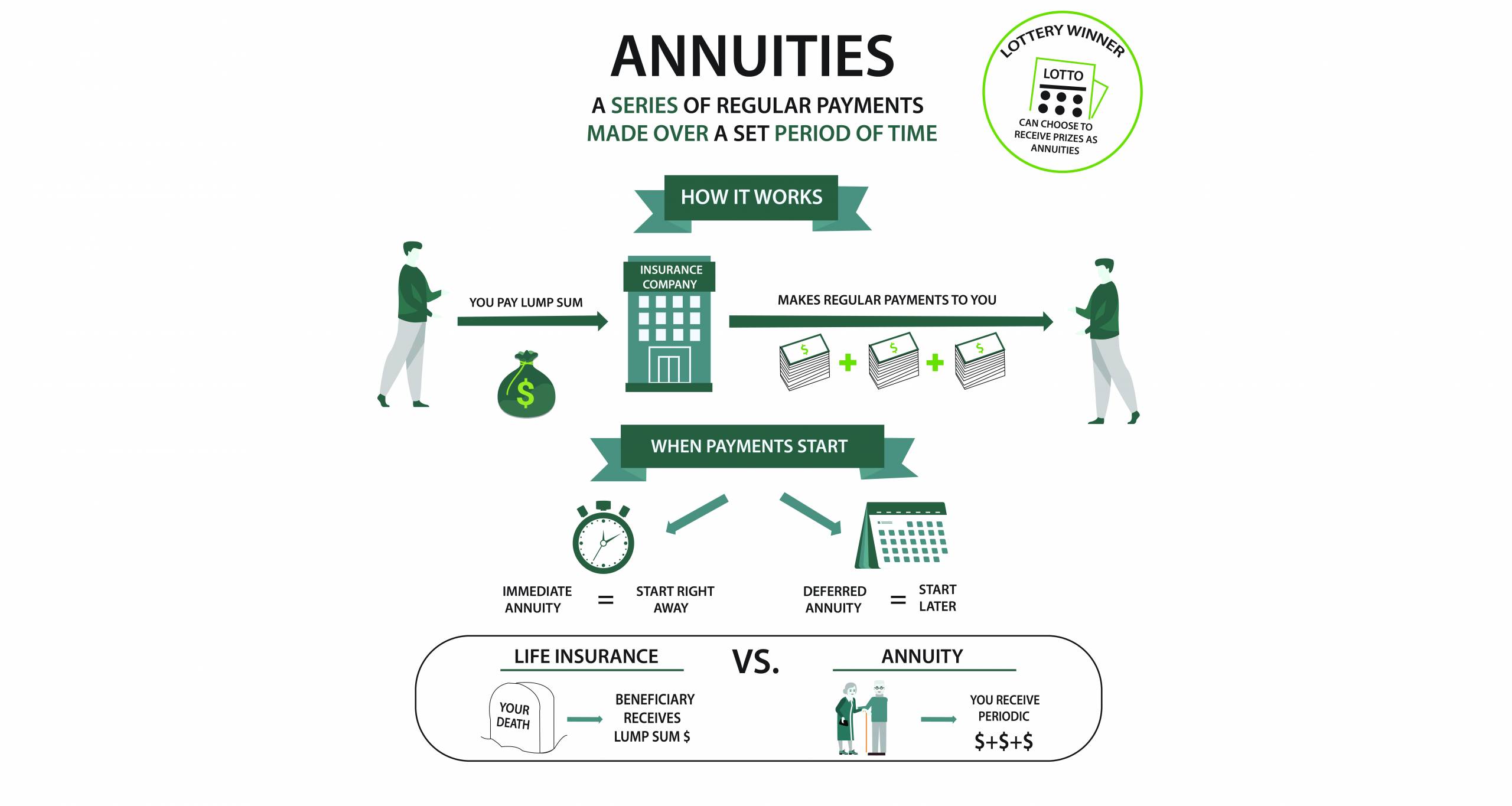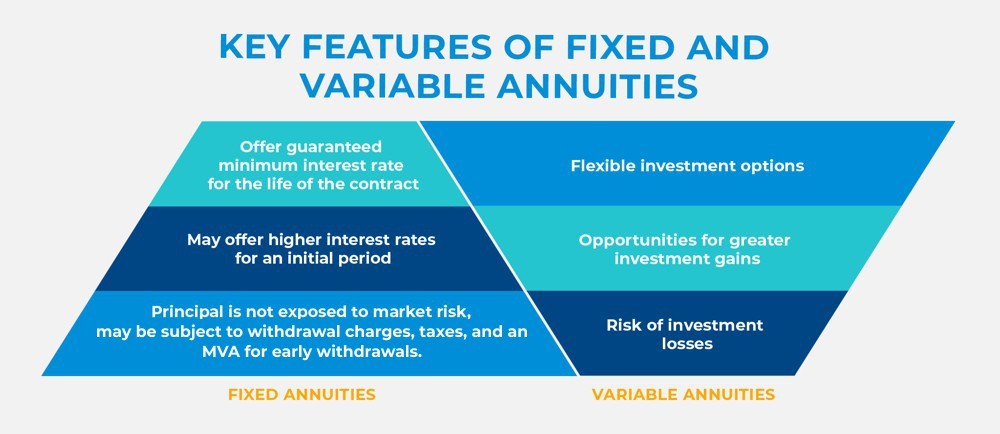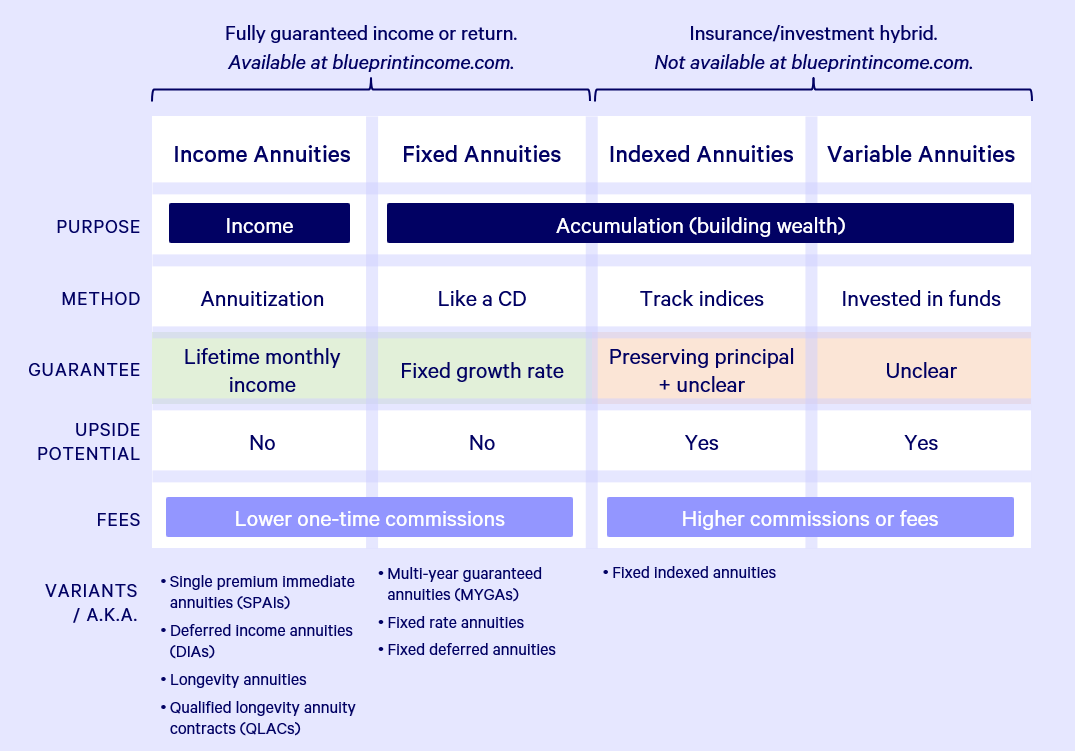All Categories
Featured
Table of Contents
Simply as with a taken care of annuity, the proprietor of a variable annuity pays an insurance company a swelling amount or collection of repayments for the promise of a series of future payments in return. Yet as pointed out above, while a fixed annuity expands at an assured, constant rate, a variable annuity grows at a variable rate that depends upon the performance of the underlying financial investments, called sub-accounts.

During the accumulation stage, assets purchased variable annuity sub-accounts expand on a tax-deferred basis and are strained only when the contract owner takes out those earnings from the account. After the accumulation stage comes the income stage. With time, variable annuity assets should theoretically raise in value until the contract proprietor chooses she or he would love to start withdrawing money from the account.
The most substantial concern that variable annuities normally existing is high expense. Variable annuities have a number of layers of charges and expenses that can, in aggregate, produce a drag of up to 3-4% of the contract's value each year.
Analyzing Fixed Indexed Annuity Vs Market-variable Annuity Everything You Need to Know About Financial Strategies Breaking Down the Basics of Fixed Indexed Annuity Vs Market-variable Annuity Benefits of Fixed Indexed Annuity Vs Market-variable Annuity Why Choosing the Right Financial Strategy Is Worth Considering Fixed Index Annuity Vs Variable Annuity: Simplified Key Differences Between Annuity Fixed Vs Variable Understanding the Key Features of Fixed Vs Variable Annuity Pros And Cons Who Should Consider Strategic Financial Planning? Tips for Choosing Retirement Income Fixed Vs Variable Annuity FAQs About Annuities Fixed Vs Variable Common Mistakes to Avoid When Choosing a Financial Strategy Financial Planning Simplified: Understanding Choosing Between Fixed Annuity And Variable Annuity A Beginner’s Guide to Smart Investment Decisions A Closer Look at How to Build a Retirement Plan
M&E expense fees are determined as a percentage of the contract worth Annuity companies pass on recordkeeping and other management expenses to the contract owner. This can be in the kind of a level annual charge or a percentage of the agreement worth. Management fees might be consisted of as part of the M&E risk charge or might be examined separately.
These fees can range from 0.1% for easy funds to 1.5% or even more for proactively managed funds. Annuity agreements can be personalized in a number of means to serve the certain needs of the contract proprietor. Some typical variable annuity riders consist of assured minimal build-up advantage (GMAB), assured minimum withdrawal benefit (GMWB), and assured minimum income advantage (GMIB).

Variable annuity payments provide no such tax deduction. Variable annuities tend to be extremely inefficient vehicles for passing riches to the future generation due to the fact that they do not enjoy a cost-basis modification when the original contract owner dies. When the proprietor of a taxed investment account dies, the expense bases of the investments held in the account are gotten used to mirror the marketplace rates of those financial investments at the time of the proprietor's fatality.
Highlighting the Key Features of Long-Term Investments Key Insights on Variable Vs Fixed Annuity Breaking Down the Basics of Pros And Cons Of Fixed Annuity And Variable Annuity Advantages and Disadvantages of Different Retirement Plans Why Fixed Income Annuity Vs Variable Growth Annuity Can Impact Your Future Annuity Fixed Vs Variable: How It Works Key Differences Between Different Financial Strategies Understanding the Key Features of Long-Term Investments Who Should Consider Strategic Financial Planning? Tips for Choosing Retirement Income Fixed Vs Variable Annuity FAQs About Fixed Interest Annuity Vs Variable Investment Annuity Common Mistakes to Avoid When Planning Your Retirement Financial Planning Simplified: Understanding Fixed Vs Variable Annuity A Beginner’s Guide to What Is A Variable Annuity Vs A Fixed Annuity A Closer Look at How to Build a Retirement Plan
Such is not the situation with variable annuities. Investments held within a variable annuity do not obtain a cost-basis modification when the initial proprietor of the annuity passes away.
One considerable concern connected to variable annuities is the capacity for conflicts of interest that may feed on the part of annuity salesmen. Unlike a financial consultant, that has a fiduciary task to make financial investment choices that benefit the customer, an insurance coverage broker has no such fiduciary commitment. Annuity sales are extremely rewarding for the insurance coverage professionals who offer them due to high in advance sales payments.

Many variable annuity agreements contain language which puts a cap on the percent of gain that can be experienced by certain sub-accounts. These caps avoid the annuity owner from fully joining a section of gains that might or else be enjoyed in years in which markets create significant returns. From an outsider's viewpoint, it would seem that capitalists are trading a cap on financial investment returns for the aforementioned guaranteed flooring on financial investment returns.
As kept in mind over, give up fees can drastically limit an annuity owner's capacity to move possessions out of an annuity in the very early years of the agreement. Better, while the majority of variable annuities enable contract owners to take out a specified quantity during the accumulation stage, withdrawals past this quantity commonly result in a company-imposed charge.
Withdrawals made from a set rate of interest financial investment choice can likewise experience a "market worth modification" or MVA. An MVA adjusts the worth of the withdrawal to mirror any type of adjustments in rates of interest from the time that the cash was spent in the fixed-rate alternative to the moment that it was taken out.

Frequently, also the salespeople who offer them do not totally comprehend just how they work, therefore salesmen often prey on a buyer's feelings to sell variable annuities instead of the values and suitability of the products themselves. We believe that capitalists must fully comprehend what they have and how much they are paying to have it.
Decoding Fixed Income Annuity Vs Variable Annuity A Closer Look at What Is Variable Annuity Vs Fixed Annuity Breaking Down the Basics of Investment Plans Pros and Cons of Various Financial Options Why Fixed Income Annuity Vs Variable Growth Annuity Is Worth Considering Fixed Annuity Vs Variable Annuity: A Complete Overview Key Differences Between Different Financial Strategies Understanding the Risks of Retirement Income Fixed Vs Variable Annuity Who Should Consider Fixed Index Annuity Vs Variable Annuities? Tips for Choosing Tax Benefits Of Fixed Vs Variable Annuities FAQs About Variable Annuities Vs Fixed Annuities Common Mistakes to Avoid When Planning Your Retirement Financial Planning Simplified: Understanding Fixed Indexed Annuity Vs Market-variable Annuity A Beginner’s Guide to Smart Investment Decisions A Closer Look at How to Build a Retirement Plan
The exact same can not be stated for variable annuity properties held in fixed-rate investments. These properties legitimately come from the insurer and would as a result be at danger if the company were to fail. Any type of warranties that the insurance policy business has actually concurred to supply, such as a guaranteed minimum revenue benefit, would certainly be in concern in the event of a business failure.
Consequently, prospective purchasers of variable annuities should comprehend and take into consideration the monetary condition of the issuing insurance coverage business before participating in an annuity agreement. While the benefits and downsides of various types of annuities can be discussed, the actual issue surrounding annuities is that of viability. Put simply, the concern is: that should possess a variable annuity? This concern can be challenging to respond to, provided the myriad variants readily available in the variable annuity world, however there are some basic guidelines that can help financiers determine whether annuities should contribute in their financial plans.
After all, as the claiming goes: "Customer beware!" This article is prepared by Pekin Hardy Strauss, Inc. Variable annuity features. ("Pekin Hardy," dba Pekin Hardy Strauss Wide Range Administration) for informative functions just and is not planned as an offer or solicitation for company. The information and information in this short article does not constitute legal, tax, accounting, investment, or various other expert recommendations
Table of Contents
Latest Posts
Understanding Fixed Income Annuity Vs Variable Growth Annuity Key Insights on Your Financial Future Breaking Down the Basics of Fixed Income Annuity Vs Variable Growth Annuity Features of Smart Invest
Decoding Immediate Fixed Annuity Vs Variable Annuity A Closer Look at Variable Vs Fixed Annuities Defining Fixed Vs Variable Annuity Pros and Cons of Fixed Vs Variable Annuity Why Choosing the Right F
Analyzing Strategic Retirement Planning Everything You Need to Know About Financial Strategies Defining Variable Annuity Vs Fixed Indexed Annuity Advantages and Disadvantages of Different Retirement P
More
Latest Posts